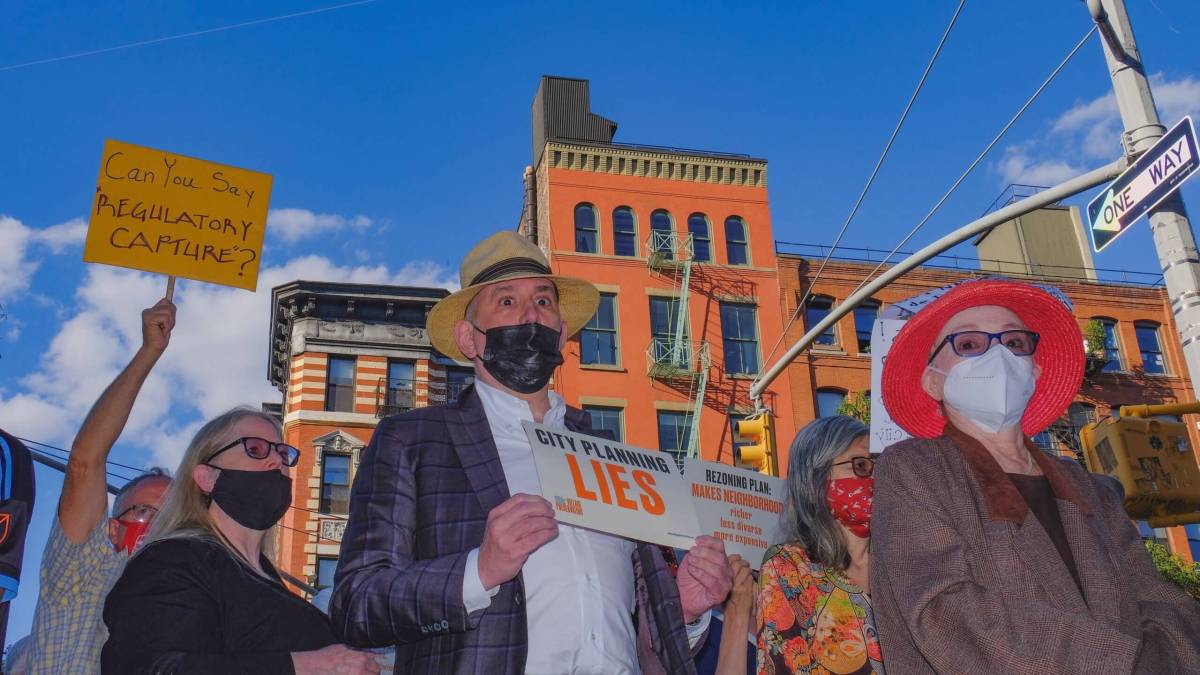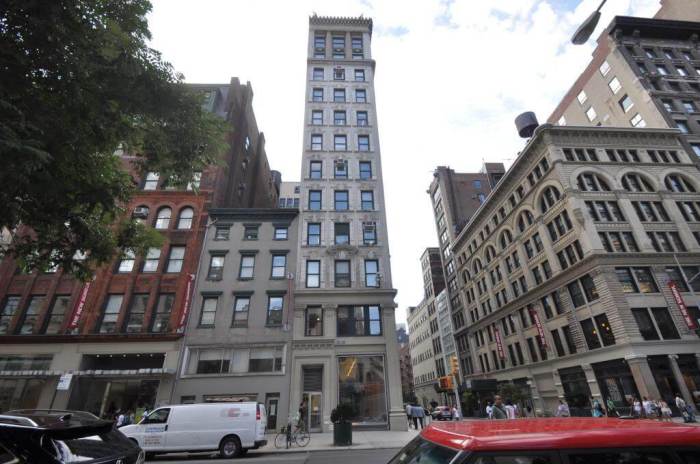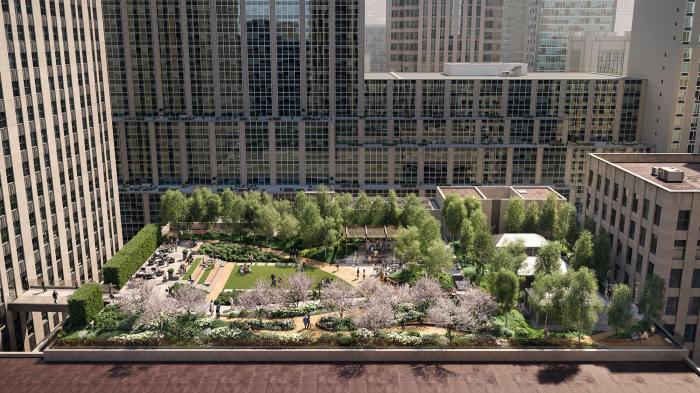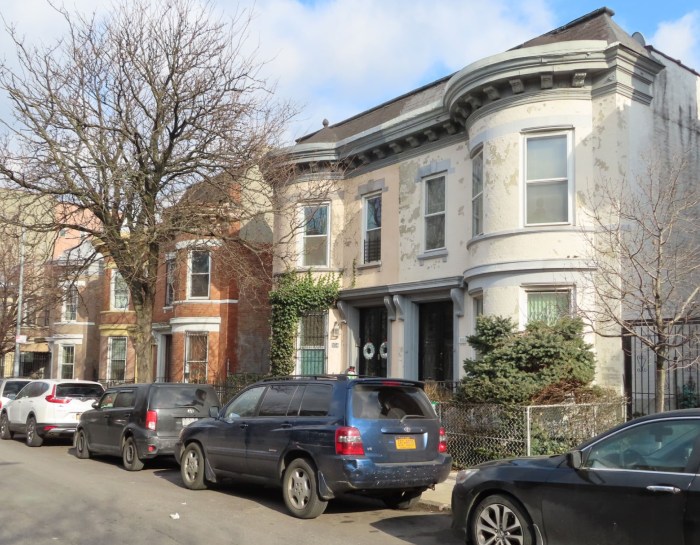With refrains calling Mayor Bill de Blasio’s plan for SoHo and NoHo a “sham rezoning,” residents of lower Manhattan cast doubt once again that the proposal to increase affordable housing in one of the trendiest neighborhoods in the city.
Inside St. Anthony of Padua Church in SoHo on Wednesday night, where the hearing for the working group was going down, city officials and Manhattan’s Community Board 2 leaders struggled with defiant commentary from the public who held similar opposition to the rezoning plan which would be the first for the area in decades.
Opponents of the rezoning, including Andrew Berman of Village Preservation and other community leaders, say the plan will act as little more than a handout to developers who will use the restrictions to build higher than ever before.
For Helen Freeman, development manager for Historic Districts Council, it goes beyond affordability and height restrictions.
“The rezoning has potential to be profoundly damaging to the designated landmarks that the historic district encompasses and to the practice of historic preservation throughout New York City,” Freeman said. “To imply that landmarking prevents the development of new housing is simply not correct. Look at Dumbo, Gansevoort, Tribeca and even SoHo and NoHo. The population in all these formerly commercial neighborhoods has increased after they were landmarked.”
Freeman explained her argument further during a press conference leading up to the June 23 hearing.
“If the study increases the underlying zoning of these buildings, encouraging much more bulk than they currently have, they put enormous strain on the Landmarks Commission to keep the landmarked building intact. If City Planning allows a 15-story building to be built where a seven-story building currently stands, how can the Landmarks Commission say no? This baked in conflict strains the system and is unfair to both property owners and agencies.”
— Mark Hallum (@MarkuuSan) June 23, 2021
But even Chairperson Jeanine Kiely expressed frustration at the enormous effort to draft a resolution on the rezoning with little time for the all volunteer staff to keep up.
“The main Draft Environmental Impact Statement is almost 800 pages with a [inaudible] totaling more than 16,000 Pages for volunteers to review – 100% of volunteer community board,” Kiely said. “This has damaged CB2’s ability to create a robust, comprehensive and accurate response to this important plan required. We will, however, draft as strong a resolution as we can. Despite the harm done by the lack of proper information in the timeframe required.”
Shouts of “no more lectures” and “no more pie charts” resounded through the basement of the church in which a representative from City Planning persisted in her explanation of the plan despite constant disruptions from the audience.
Repeated banging on equipment left behind by the Board of Elections from the Democratic primary just a day prior was also persistent and information from various speakers was not easily heard.

As the public hearing portion of the meeting progressed, those in favor of the rezoning plan were called “shills,” among other names. One man described those in agreement with the administration as ignorant and naive.
“It’d be great to have more markets and other service stores that just don’t cater to office workers and tourist, but for this one we need enough actual residents to keep them in business. Our refusal to accept change has likely damaged our community, but it’s a burden on other neighborhoods as well,” one resident said, explaining his position that more housing in the two neighborhoods would mean more affordability for others experiencing gentrification.
Jake Smith, another speaker, chose to highlight a lack of diversity among the opponents with a new tactic aimed at the majority of people in attendance holding signs that read “Stop de Blasio’s sham rezoning.”
“Let’s hold up the signs, except this time, all the white people keep them down,” he said to a brief pause before a chorus of angry shouts.
Berman, during his time at the mic, pointed out that developers who benefit from the rezoning may sidestep the mandatory inclusionary housing laws altogether by building non-residential developments.
“You would think that under this plan every new development would include affordable housing and it won’t. There are so many loopholes in the plan which they aren’t talking about by which developers can build without a single unit of affordable housing,” Berman said. “It’s about allowing huge big box chain stores into the neighborhood… which will push out any of the remaining small businesses in the neighborhood, any of the remaining arts-related groups or galleries. It will turn SoHo and NoHo into a giant mall, and that’s what the developers who’ve been giving generously to Mayor de Blasio over the last year wanted.”
City Hall’s proposal seeks to change course from M1-5B zoning currently designed to allow for manufacturing and joint living/workspace for artists in sections defined by Canal Street to the south, Houston Street and Astor Place to the north, Lafayette Street and the Bowery to the east, and Sixth Avenue and West Broadway to the west.
But by the DCP’s numbers, no less than 19% of these housing units will fall within the scope of the city’s inclusionary housing mandates, between about 621 to 940, to fall within the price range of low income New Yorkers, as released in a draft of the plan in October 2020.


















